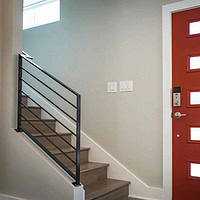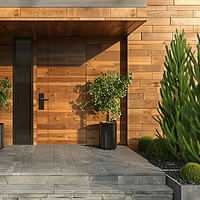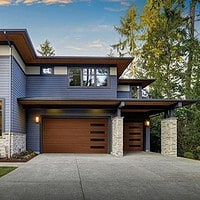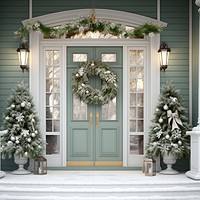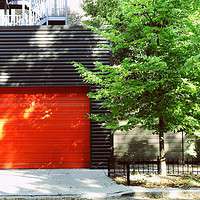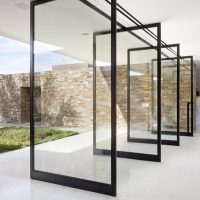Visit most modern office parks, establishments or hospitals and you’re likely to see revolving doors. They are very much a common sight especially in high rise buildings. While the classic glass design makes them particularly attractive, the doors aren’t merely for aesthetic purposes. Their value lies in the functionality of the design more than anything else.
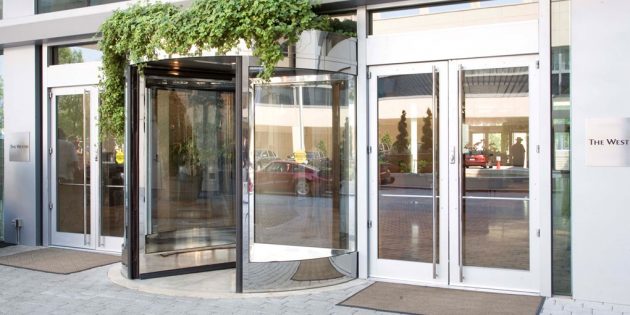
In this article we’ll highlight a few major types and uses of revolving doors&why building owners must consider them.
Components That Make Up a Revolving Door
We’ll start by quickly outlining how they are constructed and then we’ll move on to their different uses. A revolving door comprises of the following components:
- Individual door panels or wings usually numbering three or four
- A centre shaft where these panels are hung
- A cylindrical enclosure where these doors rotate in
- A mechanical braking device which is designed to control the speed of rotation
- An electric motor that powers the doors
Generally, these individual doors are designed to hang on the central shaft upon which they rotate within the enclosure. The direction in which they rotate will depend on the country in question.
In countries like Australia, these doors are designed to rotate clockwise. In Britain, the door rotations are mixed; they can either rotate clockwise or anti-clockwise depending on the building owner’s preference.
Uses of Revolving Doors
As mentioned earlier, revolving doors aren’tsought after solely for their appealing looks, but because they’re practical solutions for any scenarios.
Relieve Pressure
High rise buildings are known to experience a lot of pressure which is caused by air rushing through the building.Revolving doors act by relieving this pressure in buildings.
Energy Efficient
Revolving doors are known to be energy efficient. They’re designed to act as an airlock and prevent drafts. This consequently minimises the loss of heating and cooling for the building in question.
Control Traffic
These doors also work by controlling traffic. Plus, depending on the design, they’ll also allow a large number of people to enter and exit a building without creating a bottleneck.
Access Control
Revolving doors can effectively be used for access control in certain institutions like government departments. Such institutions prioritise the control of access to:
- Property
- Information
- Record keeping
Types of Revolving Doors
Automatic Revolving Doors
Automatic revolving doors are very common among establishments that deal with high traffic. Advance Access is known for specialising in installing of high quality automatic revolving doors. These doors are powered either below or above the central shaft or along its perimeters.
Automatic revolving doors normally have brakes that are activated by safety sensors. This is to ensure users’ safety during use. The automatic design makes them ideally suited to handle high volumes of traffic on a daily basis. For this reason, you’re likely to find them in:
- Office parks
- Universities
- Public buildings
- Shopping malls
Apart from effective traffic management, automatic revolving doors are also preferred for their impressive architectural appeal.
Security Revolving Doors
As the name implies, security revolving doors are prominent features on buildings that require high levels of security including:
- Banks
- Airports
- Pharmaceutical companies
- Laboratories
- Financial institutions
- Corporate head offices
- Government organisations
The type of security revolving door you pick will depend on the building you’re using it on. It also depends on the security level you want to achieve. Below are a few examples:
- You can pick a door designed to restrict entry to a single person at a time. This type will work better when placed in financial institutions where you want security cameras to monitor individuals that enter or leave the building.
- Other automatic revolving doors are specifically designed for one-way traffic. Persons can only enter using one way and are prohibited from entering via the exit. This type of door is common at airports to ensure people don’t bypass security checkpoints.
- Exit only doors allow individuals to only exit using the designated door to prevent them from avoiding payment counters.
Manual Revolving Doors
Manual revolving doors are a worthwhile alternative to automatic revolving doors. They also feature a three or four panel configuration pretty much like the automatic revolving doors. Such doors are preferred by many building owners for their reliability. Plus, they also significantly improve a building’s aesthetics.
This makes them the ideal pick to use on the entrance of almost any building but their energy efficiency makes them popular for:
- Restaurants
- Hotels
- Office buildings
- Retail institutions
- Schools
- Libraries
- Universities
- Health clubs
Manual revolving doors are for organisations that want compact and low energy doors. Much like the automatic revolving doors, the manual doors are also ideal for traffic management. The only difference is this type doesn’t open automatically. It’s associated with the following characteristics:
- The door needs a gentle push from the user to open
- This door is designed to operate at the user’s speed
- It’ll always stop in the preferred position of the next user
The above factors allow the user to always maintain an indoor space that’s comfortable to him or her. This essentially makes users feel safer when using it.
Important Considerations
While revolving doors may be preferred for security reasons, you can’t completely disregard the potential risk to users. Some governments have imposed laws with regards to the installation of revolving doors to ensure user safety.Some of the characteristics that must be present on all revolving doors include the following:
- The door must be collapsible to allow people to pass from either side in the event of an emergency.
- The doors must have hinges to provide the user with equivalent exiting capacity in the case of an emergency.
Final Words
It’s clear how valuable revolving doors are. But it’s imperative that a balance is struck between their security functionality and the safety of individuals.

